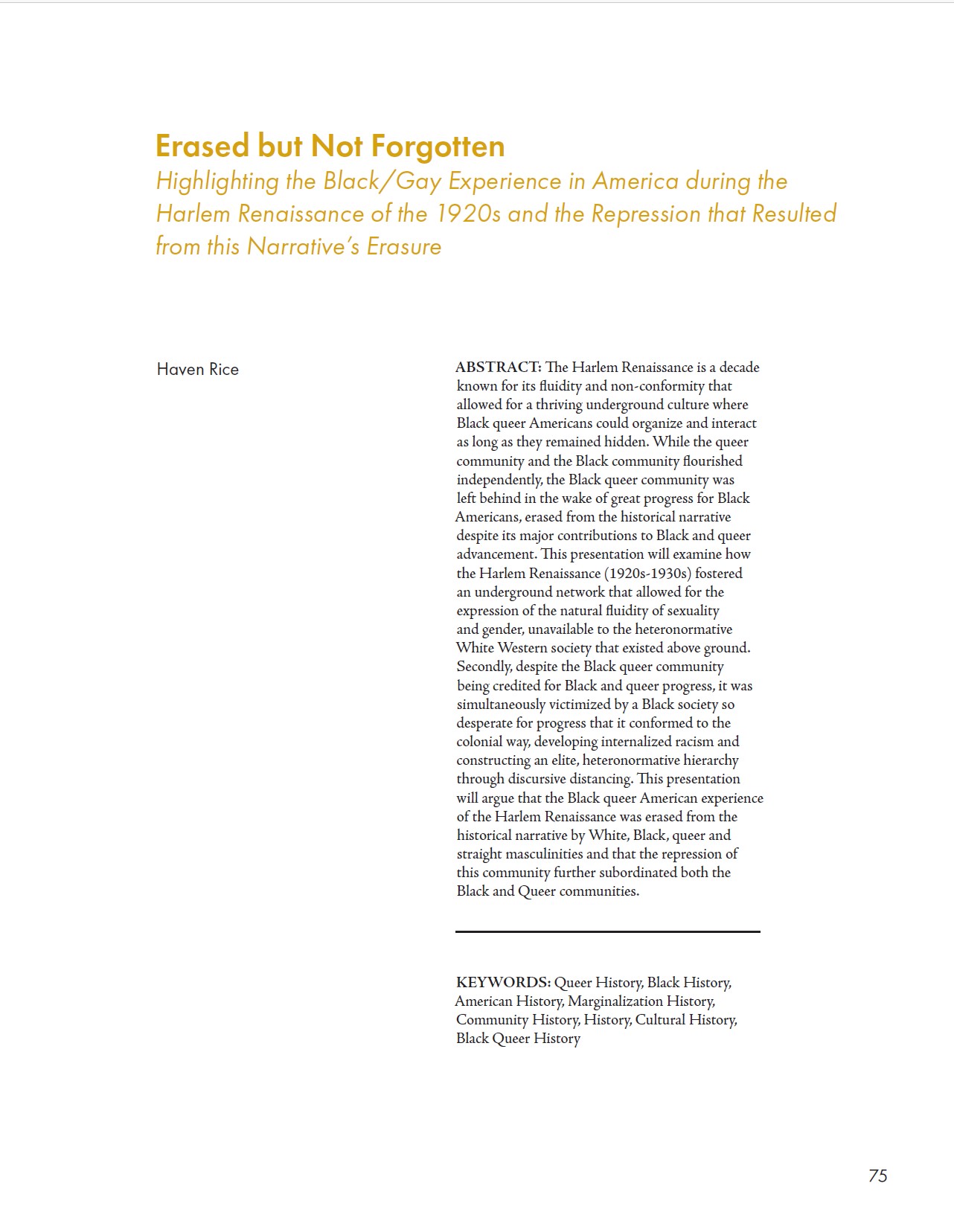Erased But Not Forgotten
Highlighting the Black/Gay Experience in America during the Harlem Renaissance of the 1920s and the Repression that Resulted from this Narrative’s Erasure
DOI:
https://doi.org/10.29173/crossings274Keywords:
Queer History, Black History, American History, Marginalization History, Community HistoryAbstract
The Harlem Renaissance is a decade known for its fluidity and non-conformity that allowed for a thriving underground culture where Black queer Americans could organize and interact, as long as they remained hidden. While the queer community and the Black community flourished independently, the Black queer community was left behind in the wake of great progress for Black Americans, erased from the historical narrative despite its major contributions to Black and queer advancement. This presentation will examine how the Harlem Renaissance (1920s-1930s) fostered an underground network that allowed for the expression of the natural fluidity of sexuality and gender, unavailable to the heteronormative White Western society that existed above ground. Secondly, despite the Black queer community being credited for Black and queer progress, it was simultaneously victimized by a Black society so desperate for progress that it conformed to the colonial way, developing internalized racism and constructing an elite, heteronormative hierarchy through discursive distancing. This presentation will argue that the Black queer American experience of the Harlem Renaissance was erased from the historical narrative by White, Black, queer and straight masculinities, and that the repression of this community further subordinated both the Black and Queer communities.
Downloads
Published
Issue
Section
License
Copyright (c) 2024 Haven Rice

This work is licensed under a Creative Commons Attribution 4.0 International License.

